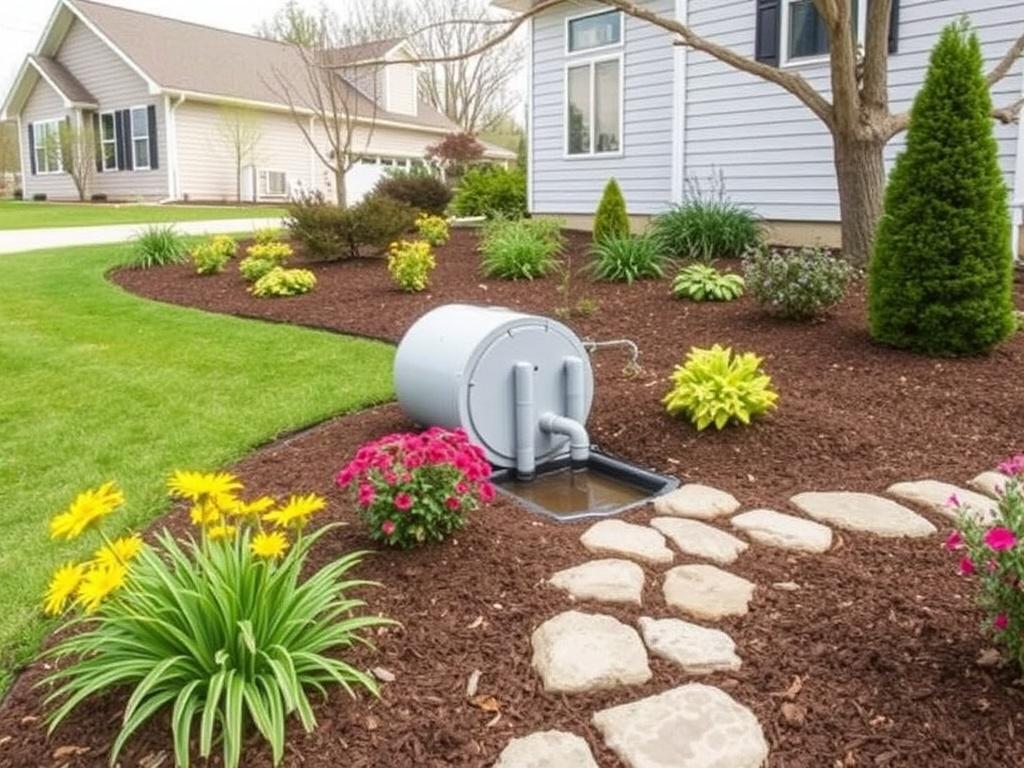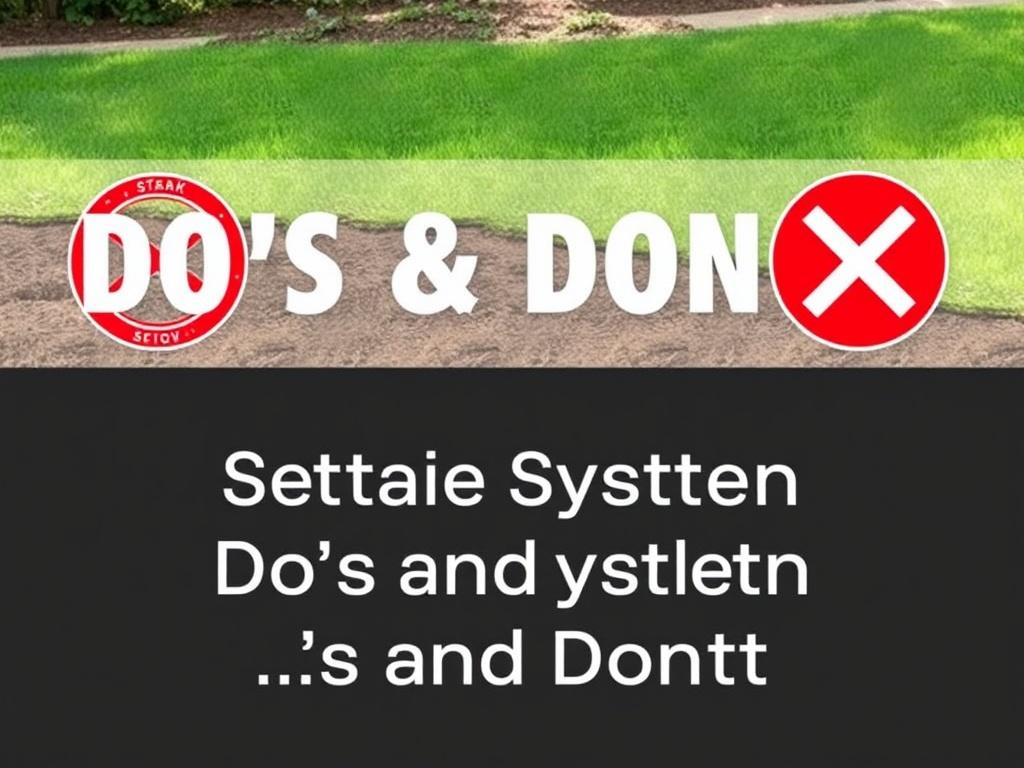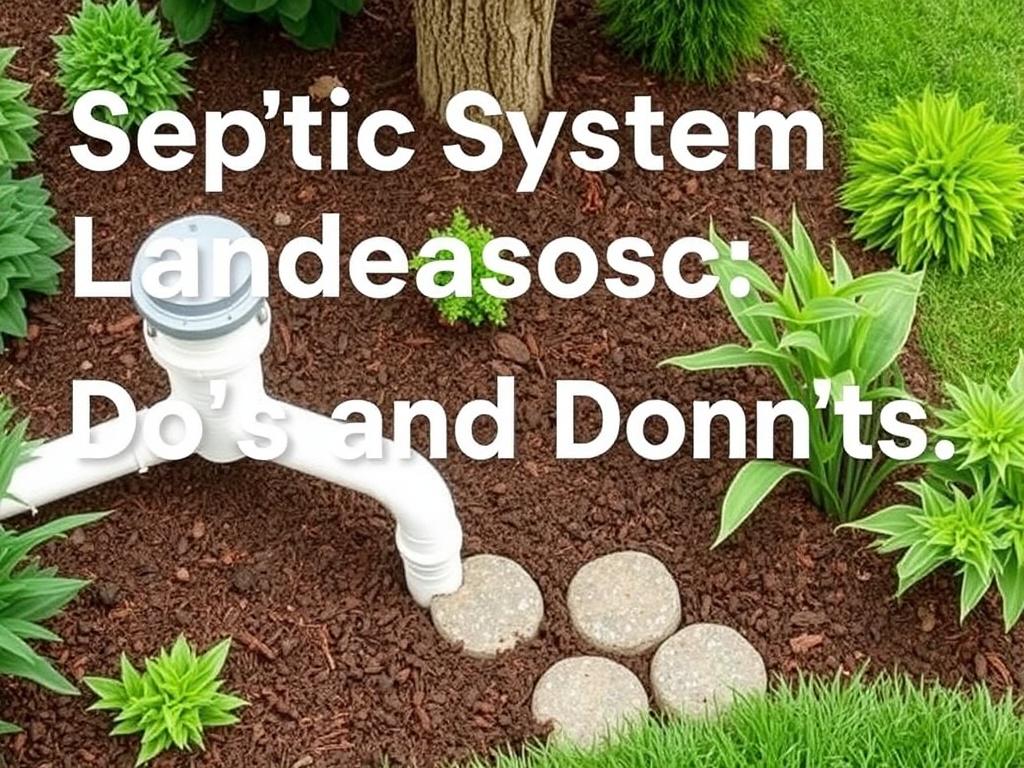When it comes to maintaining a healthy and functioning septic system, proper landscaping plays a crucial role. Many homeowners are unaware that the way they landscape over or near their septic system can directly impact its performance and longevity. Septic system landscaping do’s and don’ts can be the difference between a smoothly running system and costly repairs or environmental hazards. In this article, we’ll walk you through everything you need to know to safeguard your septic system through smart landscaping choices while making your yard beautiful and functional.
- Understanding Your Septic System
- Septic System Landscaping Do’s
- 1. Plant Shallow-Rooted Grass
- 2. Mark Your Septic Tank and Drainfield Locations
- 3. Use Mulch and Gravel Sparingly and Strategically
- 4. Install Fencing or Barriers to Prevent Vehicle Traffic
- 5. Schedule Regular Septic Inspections
- Septic System Landscaping Don’ts
- 1. Don’t Plant Deep-Rooted Trees or Shrubs Near Your Septic System
- 2. Don’t Build Structures or Install Heavy Equipment Over the System
- 3. Avoid Excessive Watering Over the Drainfield
- 4. Don’t Plant Vegetable Gardens Over or Near the Septic Area
- 5. Avoid Using Chemical Pesticides or Fertilizers Near the System
- Septic System Landscaping Tips for Different Yard Areas
- Septic Tank Area
- Drainfield Area
- Buffer Zones
- Table: Comparison of Plants Suitable and Unsuitable for Septic System Landscaping
- Maintenance Strategies to Protect Your Septic Landscaping
- Septic System Landscaping and Environmental Benefits
- Hiring Professionals: When to Call for Help
- Summary Checklist: Septic System Landscaping Do’s and Don’ts
- Conclusion
Understanding Your Septic System

Before diving into specific septic system landscaping do’s and don’ts, it’s essential to understand the basic components and functions of a septic system. Essentially, a septic system is an underground wastewater treatment structure common in rural areas or homes without centralized sewer. It typically consists of three parts: the septic tank, the drainfield, and the soil beneath.
The septic tank collects wastewater from your home and allows solids to settle while lighter materials float. The partially treated water then flows into the drainfield, a series of perforated pipes surrounded by gravel or sand that disperses wastewater into the soil. From here, natural processes further purify the water before it enters groundwater.
Because a septic system relies heavily on soil absorption and delicate underground components, anything that interferes with this process can cause blockages, backups, or system failures. This is why septic system landscaping do’s and don’ts are vital for homeowners to follow.
Septic System Landscaping Do’s
If you want your septic system to last for decades while keeping your yard lush and attractive, here are some key septic system landscaping do’s to keep in mind:
1. Plant Shallow-Rooted Grass
Grass is a septic system’s best friend. It helps prevent soil erosion and absorbs excess water without threatening the septic tank or drainfield. Shallow-rooted grasses such as fescues, bluegrass, or ryegrass work perfectly over septic systems because their roots don’t penetrate too deeply, which minimizes the risk of damaging underground pipes.
2. Mark Your Septic Tank and Drainfield Locations
One of the simplest septic system landscaping do’s is to clearly mark where your septic tank and drainfield are located. This prevents accidental digging or planting near these sensitive areas. Use decorative markers, stones, or signs to remind yourself and landscapers where to avoid heavy equipment or invasive plants.
3. Use Mulch and Gravel Sparingly and Strategically
Mulch can help retain soil moisture and reduce erosion around your septic system, but it should be applied moderately. Too thick a layer can prevent the soil from drying properly, resulting in a soggy drainfield area. Small gravel used around the edges of the system can also provide good drainage without suffocating the soil below.
4. Install Fencing or Barriers to Prevent Vehicle Traffic
An often overlooked septic system landscaping do is to restrict vehicle traffic over the drainfield or septic tank area. Vehicles compact the soil, preventing adequate water absorption and damaging the septic system. Installing a simple fence, barriers, or signage can keep cars, heavy equipment, and even pets from disturbing these regions.
5. Schedule Regular Septic Inspections
Maintaining your septic system goes beyond landscaping, and it’s a good idea to schedule routine inspections with septic professionals. This ensures all parts are functioning well and can help create a maintenance schedule aligned with your landscaping practices.
Septic System Landscaping Don’ts
Just as important as following septic system landscaping do’s, there are some clear don’ts that homeowners should avoid to prevent damage and costly failures. Here are the most critical septic system landscaping don’ts:
1. Don’t Plant Deep-Rooted Trees or Shrubs Near Your Septic System
One of the biggest no-nos in septic system landscaping is planting trees or shrubs with deep, aggressive roots near your septic tank or drainfield. Roots seek out moisture, and they can easily infiltrate septic pipes or tanks, causing cracks, blockages, or system failure. Popular offenders include maples, willows, poplars, and pines. Maintain at least 20 to 30 feet between these trees and your system.
2. Don’t Build Structures or Install Heavy Equipment Over the System
Building decks, sheds, driveways, or even placing heavy machinery on top of the septic drainfield or tank area is a big mistake. The weight compresses the soil, restricts airflow, and can crush pipes, leading to malfunction. Always keep these areas free and accessible.
3. Avoid Excessive Watering Over the Drainfield
While keeping your lawn green is important, overwatering the drainfield area may saturate the soil, reducing its ability to absorb and treat wastewater. Avoid sprinkler systems that directly hit the drainfield and aim for moderate and even watering across your yard.
4. Don’t Plant Vegetable Gardens Over or Near the Septic Area
Planting edible gardens over septic systems can pose health risks because harmful pathogens can contaminate crops if septic leachate escapes or pipes leak. It’s best to keep vegetable or fruit gardens well away from the drainfield and septic tank.
5. Avoid Using Chemical Pesticides or Fertilizers Near the System
Many chemicals can disrupt the beneficial bacteria that break down waste in your septic system. Overuse of pesticides or chemical fertilizers near the septic area can kill these bacteria, causing wastewater to remain untreated and potentially polluting groundwater. Opt for natural or organic lawn care options when managing vegetation near your septic system.
Septic System Landscaping Tips for Different Yard Areas

Landscaping around septic systems requires some planning to accommodate different zones in your yard. Let’s break down some practical tips you can apply depending on the area surrounding your system.
Septic Tank Area
Because the septic tank is where solids settle and require access for pumping and inspection, it’s essential to keep this area clear and accessible. Choose low-maintenance, shallow-rooted grass here, and avoid heavy foot traffic or machinery. You can also consider installing a low fence or decorative stones to mark the spot.
Drainfield Area
The drainfield is the most sensitive part of the septic system when it comes to landscaping. Use drought-resistant, shallow-rooted grasses to help absorb water efficiently without damaging underground piping. Throughout the year, monitor this area visually for wet spots, unpleasant odors, or overgrown vegetation that may signal problems. Avoid planting bushes or trees here and ensure easy access for septic service providers.
Buffer Zones
Between your septic system parts and other yard features, maintain buffer zones where you can plant more diverse vegetation or install garden elements. Use this space wisely for flower beds, shrubs with non-invasive root systems, or light garden furniture to beautify your space without crossing into restricted areas.
Table: Comparison of Plants Suitable and Unsuitable for Septic System Landscaping
| Plant Type | Suitable for Septic Areas | Unsuitable for Septic Areas |
|---|---|---|
| Grasses | Fescue, Kentucky bluegrass, Ryegrass | Bermuda grass (can be invasive) |
| Shrubs | Azaleas, Hydrangeas (planted away from system) | Willow, Poplar, Maple |
| Trees | Dogwood, Redbud (planted far from system) | Willow, Pine, Poplar, Birch |
| Ground Covers | Periwinkle, Creeping Thyme, Clover | Mint (invasive roots) |
Maintenance Strategies to Protect Your Septic Landscaping

Beyond choosing the right plants and avoiding restricted activities, ongoing maintenance is key to making your septic landscaping work well.
- Regularly Check for Signs of System Stress: Wet or soggy areas, foul odors, or lush vegetation patches over septic zones may indicate trouble.
- Keep Driveways and Play Areas Separate: Establish designated zones for vehicles and kid’s play away from the septic system.
- Water Wisely: Use drip irrigation or soaker hoses for plants near septic areas to control moisture levels.
- Schedule Inspections and Pumping: Routine septic tank pumping every 3-5 years based on use also supports healthy landscaping by preventing system overflow.
- Educate Family Members: Make sure everyone understands the limits on landscaping, parking, or digging near septic areas to avoid accidents.
Septic System Landscaping and Environmental Benefits
Thoughtfully landscaping around your septic system doesn’t just protect your property — it also benefits the environment. By using native, drought-tolerant grasses and limiting chemicals near your system, you help reduce water pollution and protect local waterways from contaminated runoff.
Maintaining good soil structure around your system ensures natural filtration of wastewater, improving groundwater quality. Moreover, healthy vegetation reduces erosion and sequesters carbon, contributing to your yard’s overall ecosystem.
Hiring Professionals: When to Call for Help
While many septic system landscaping do’s and don’ts are straightforward and DIY-friendly, there are times when professional assistance makes sense.
– If you’re unsure about septic tank or drainfield locations, request a septic system inspection or site survey.
– For complex landscaping projects requiring heavy equipment, having a professional landscaper familiar with septic systems avoid costly mistakes.
– If tree removal or root infiltration has already occurred, septic experts can help repair or replace damaged components.
– Consulting a soil specialist or septic system engineer ensures your drainfield remains optimally functional during major landscaping renovations.
Summary Checklist: Septic System Landscaping Do’s and Don’ts
| Do’s | Don’ts |
|---|---|
| Plant shallow-rooted grass over septic areas | Avoid planting trees or shrubs with aggressive roots near the system |
| Mark septic tank and drainfield locations clearly | Do not build structures or place heavy equipment on the drainfield |
| Restrict vehicle and foot traffic on septic zones | Avoid excessive watering or sprinkler use on the drainfield |
| Use natural lawn care products near septic areas | Don’t plant vegetable gardens over the system |
| Schedule regular septic inspections and pumping | Avoid digging or disturbing soil near septic pipes |
Conclusion
Septic system landscaping do’s and don’ts are vital guidelines that every homeowner should embrace to ensure their septic system functions properly for years to come. By selecting the right plants, protecting your septic tank and drainfield from damage, and avoiding common mistakes like planting deep-rooted trees or building over the system, you maintain the delicate balance needed for safe wastewater treatment. Your septic system does a big job beneath your lawn—show it some love with thoughtful landscaping choices that promote healthy soil, prevent damage, and safeguard both your home and the environment. With these tips in mind, you’ll enjoy a beautiful yard and a worry-free septic system, blending functionality with aesthetics in perfect harmony.
Помогла вам статья?






